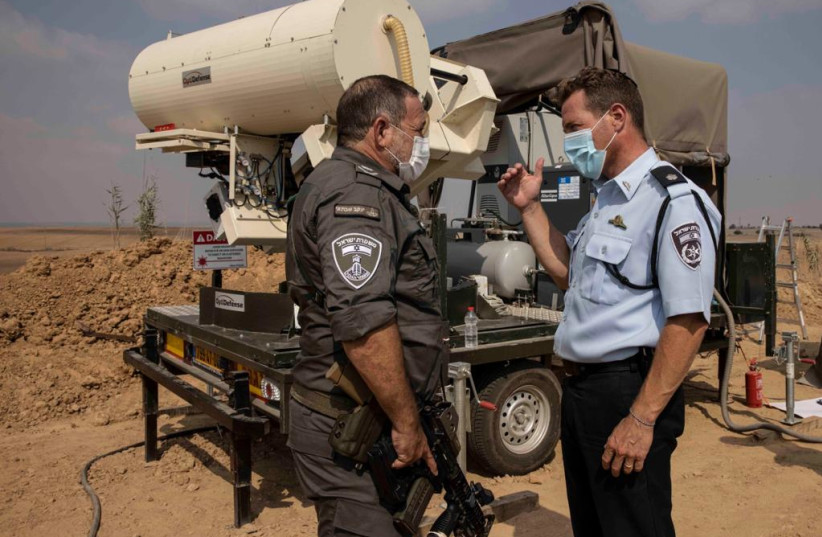Those who read carefully Prime Minister Naftali Bennett’s speech about a new laser defense system will realize that less was promised than some of the loud headlines the speech produced.
Besides the positive value of trying to attract additional investment into these systems, much of the headlines to the speech was a bluff because lasers are not predicted to provide real defense against Hezbollah and Hamas for several years, more than the one or two years that were tossed around.
Might lasers supplant the Iron Dome as the No. 1 missile-defense system over the next five to 10 years? And should money be directed to get to that point sooner? Absolutely.
However, there needs to be honesty on their limits.
Even if the project brings us into the age of Star Wars-like lasers that protect us some of the time, we will still be quite vulnerable for the foreseeable future.

Hamas, which had less than 20,000 rockets during the Gaza War in May (less than one-seventh of Hezbollah’s rocket arsenal), showed that it could beat Iron Dome by focusing hundreds of low-quality rockets on one or two Israeli cities in a matter of minutes.
Top Israeli rocket experts had said several years ago that Hezbollah could fire up to 1,500 rockets at a time, a number that is likely much higher now.
It took years and years, not one or two, from the time Iron Dome was tested with theoretical field tests, to the time it was deployed on a pilot basis to shoot down one or two real rockets, and to when enough Iron Dome batteries were produced and enough IDF troops were trained so that it could defend multiple cities at the same time.
Hezbollah’s capabilities for beating Iron Dome, and likely the new laser defense, is not just based on volume. It has between dozens to hundreds of high-quality precision-guided missiles that will be much harder for any Israeli defenses to shoot down, and that are much more likely to hit sensitive targets whether in Tel Aviv, Dimona or national airports.
Israeli defense experts estimate that a war with Hezbollah would lead to thousands of Israeli civilians dead, and massive infrastructure damage.
There is no reason to think that the new laser defense systems will change that scenario in the near future.
What is crucial about the laser system is that over a five to 10 year period, Jerusalem can flip the trend of whose arms race costs more.
Currently, Israel spends $50,000-100,000 on Iron Dome interceptors.
Hamas spends $300-$800 on its cheaper rockets, with the cost of some of its better rockets less well-known.
Laser defense systems will eventually save Israel tremendous amounts of money in defense. But Hamas rockets are so cheap that lasers will save Israel money more than it will lead to bankrupting Hamas from being able to continue its rocket program.
Hezbollah’s better rockets also cost somewhat more, but it already has between 150,000 and 170,000 rockets. Its arsenal and ability to threaten Israel will not really be harmed by Jerusalem’s advances in laser defense.
So will those advances eventually lead to impressive budget savings? Definitely.
But does it change the entire game in terms of rocket threats from Hezbollah and Hamas? Not even close.
